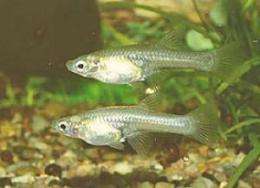October 1, 2009 weblog
Symmetrical brains can be an advantage

(Â鶹ÒùÔºOrg.com) -- Many studies have found widespread asymmetry in the brains of different species, including humans, and most have assumed asymmetry is advantageous. A new paper, published in the Proceedings of the Royal Society B, suggests it is not always an advantage, at least for one species of fish.
Many species have divided or asymmetrical brains with different functions in the two hemispheres, a phenomenon known as lateralization. Recent studies in primates, fish and birds have found that lateralized brains are common, but in fish and birds there is a wide range in the degree of lateralization within the species.
Studies on parrots have found that birds with more lateralized brains were more easily able to find food, but a group of scientists in Italy decided to find out if there were costs associated with lateralization as well as benefits.
The scientists, led by Marco Dadda of the University of Padua, spent four years breeding a fish species known to have a lateralized brain, the goldbelly topminnow (Girardinus falcatus). The fish were divided into three groups according to the dominant sides of their brains. This was determined by observing which way the fish turned when escaping a predator. Those turning right 80% of the time were classified as right eye/left brain dominant, those turning left were left eye/right brain dominant, and those with no preference were classified as non-lateralized.
After classifying the fish, the scientists did a number of experiments to see if lateralization was beneficial or otherwise. In one experiment the fish were allowed to choose between two shoals of other minnows. Each shoal could be seen by only the right or left eye. The researchers reasoned that the best chance of survival for a fish such as the minnow is to belong to a large shoal of similar sized fish so the individual does not stand out from the crowd and draw the attention of predators.
The researchers found the non-lateralized fish picked the most advantageous shoal 60% of the time, but the lateralized fish chose to join the most advantageous shoal only 34% of the time, and more often preferred the shoal they saw with their dominant eye.
The findings suggest the non-lateralized fish were better able to judge information they received from both eyes, while the lateralized fish favored their dominant side. This means there is a trade-off between the advantages and disadvantages of lateralization. In some situations symmetrical brains that can process the information from both eyes equally are an advantage.
More information: The costs of hemispheric specialization in a fish, Proceedings of the Royal Society B,
© 2009 Â鶹ÒùÔºOrg.com

















